January 8 is starting to be one of the worst days on the calendar for me. The last two years in a row, Uber has announced vicious fare cuts in cities across the country on this day.
In 2015, they cut rates in 48 cities and in 2016, they cut rates in 80 cities (with 20 more to come to make it an even 100). Obviously it’s a natural reaction to be angry but now that a couple weeks have gone by, I wanted to examine what these cuts mean for drivers, whether it still makes sense to drive for Uber and what your other options may be.
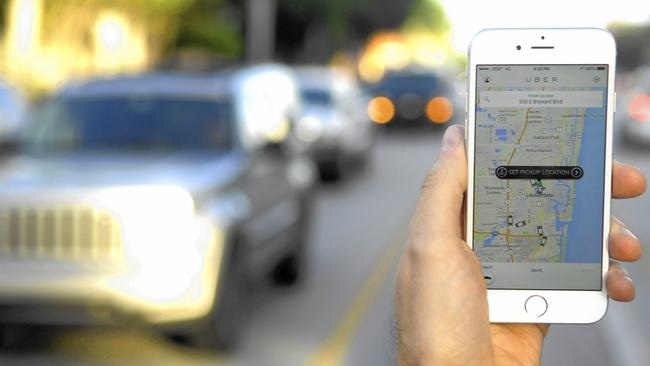
I think it’s unfortunate that a company with so much money and so much notoriety treats its drivers so poorly. Even though they call us ‘partners’ and like to tell us that ‘lower fares means higher earnings’ we all know (or should know by now) that’s just not true. You will not find a driver who is making more today than they made two years ago, the math is pretty clear on that one.
Rates and pay are going to vary from city to city but at the end of the day, it’s really a personal decision whether the income is enough for you or not. I think it’s more than okay to be angry over fare cuts, but a lot of people need the money from this job and they may not have other options.
Personally, if I wasn’t still running this blog, I don’t know if I would still be driving for Uber. I think there are better opportunities out there, but I also don’t think it’s my place to tell people what they should or shouldn’t be doing.
Which Cities Were Affected The Most?
You can find a full list of the new fares by city (Uber and Lyft) here in my spreadsheet, but I wanted to highlight some of the cities that had the biggest decreases (by percentage) for average trip lengths.
Whenever Uber cuts fares, the first thing a lot of people look at is the mileage rate and how it changed. But your pay depends on more than just mileage, it’s also a function of time and base fare. I used data from Sherpashare that gave me the average trip length for a few major cities and used that to calculate the % change of an average fare.
Top 10 Cities With The Worst Fare Cuts
The average trip length data I used was 4.54 miles and 12 minutes. So for example, in San Diego before the Uber fare cuts, a 4.54 mile and 12 minute trip would have paid a driver $7.40 ($1.85 base charge, $1.10/mile, $0.20/mile) after Uber’s 20% commission but after the fare cuts that same fare in San Diego will only net a driver $4.23 ($0 base charge, $0.90/mile, $0.10/mile) after Uber’s 20% commission. That’s a decrease of almost 43% which actually topped our list.
So you can see why you need to look at more than just the mileage drop in your city. For San Diego, the base rate dropping so much was the main reason for such a large decrease. The mileage rate only went down 18% but when you add in the base charge and the per minute drop, you are now getting paid a lot less. You can find a full list of fare cuts by average fare here in my spreadsheet.
| City | % Change |
| San Diego | -42.82% |
| Modesto | -39.41% |
| Spokane | -34.94% |
| Inland Empire | -34.54% |
| Cleveland | -28.95% |
| Oklahoma City | -28.50% |
| Toledo | -28.22% |
| Honolulu | -26.15% |
| Atlanta | -24.68% |
| Fresno | -23.79% |
How Can Detroit Be At 30 Cents Per Mile?
When I first started hearing rumors about Detroit dropping to 30 cents a mile, I figured it had to be a mistake, or a joke. How could that even be possible – right?
I’ve always found it silly when drivers say they are losing money driving for Uber. If that were the case, then it wouldn’t make much sense to drive for them. But at 30 cents per mile, you could legitimately be losing money and not even realize it. Let’s take a further look at how that could happen.
I made another spreadsheet that allows you to enter inputs like mileage rate, minute rate, etc for your city, and you can also input a couple other variables about your driving habits (average speed and cost per mile to own/operate your vehicle).
For this example, I also conservatively estimated that your average driving speed is 45 MPH while you’re being utilized (basically your average speed while on a ride). That’s probably a bit high/conservative, but if you’d like to change the assumptions, you can download a copy of my spreadsheet and enter your own numbers.
Using Detroit’s new rates, at an average speed of 45 MPH, I found that you can make no more than $22/hour (after Uber’s 20% cut) in a best case scenario. So that means if you’re on a trip for an entire hour and average 45 MPH, you make $22/hour. But that really never happens AND you also need to take into account your expenses.
It’s honestly tough to calculate this but I would estimate a decent Prius/economical car is in the 20-30 cent per mile range. So again, if we conservatively use 20 cents per mile as the cost to own and operate your vehicle (see below for why the 2016 IRS mileage rate of 54 cents/mile shouldn’t be used here), you will only make $13/hour in a BEST case scenario.
More than likely though, your utilization will be in the 40-70% range and with an average speed of 45 MPH, you will make $9-$16 before taking expenses into account. After expenses, you’ll likely be in the $5-$9/hour range.
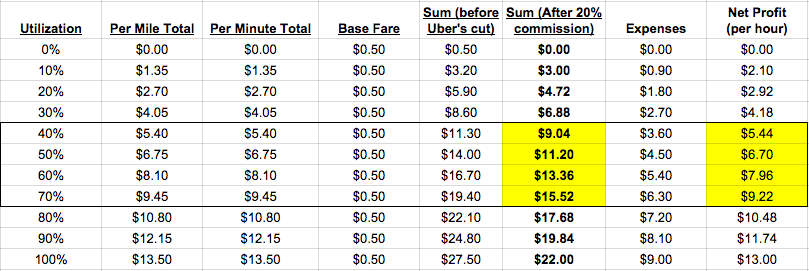
It’s tough to say what rate drivers should get paid, but I can tell you that I think $5-$9 is way too low. In fact, the minimum wage in Michigan right now (2016) is at $8.50/hour, so Uber is effectively able to bypass minimum wage laws using the current independent contractor setup. That doesn’t seem right to me. Especially since they are clearly banking on the fact that drivers won’t be able to calculate their true cost of ownership.
Now obviously drivers who drive below minimum wage bear some responsibility too, since they’re still driving at those rates. But I have to imagine that a lot of them frankly aren’t good at figuring out how much they’re really making. Why else would there still be so many Uber cars on the road in Detroit?
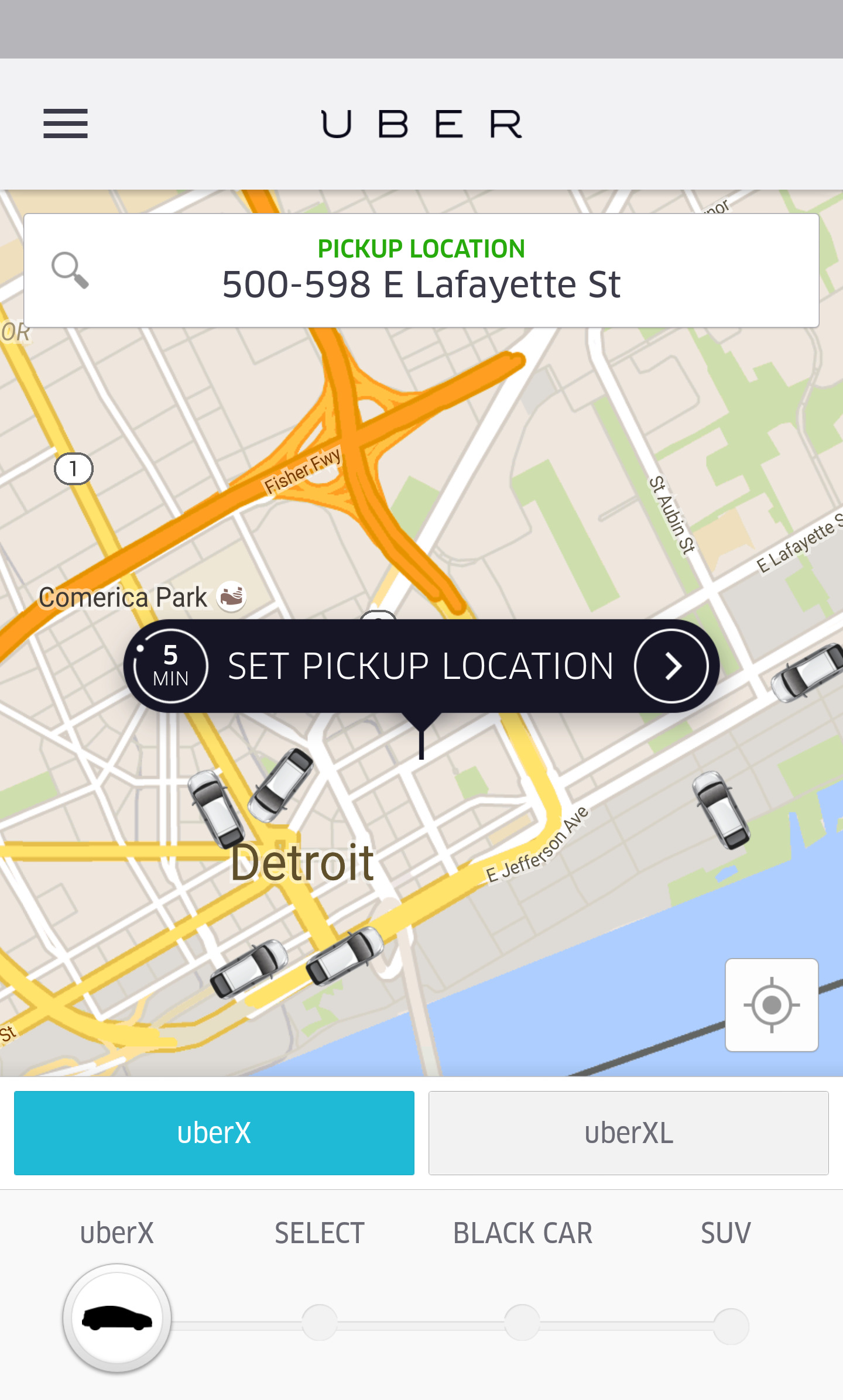
Are These Rates Fair?
It’s easy to look at Uber’s latest rate cuts and say they aren’t fair, but Uber is really free to charge whatever they want. It’s their company, after all. But the reality is in certain places and for certain people, this is turning into a minimum wage job. You should see that pretty clearly from the example above.
And the reason why you hear so many different opinions on whether it makes sense driving for Uber or not is because there is a lot of variability with this line of work. Some drivers are frankly a lot better drivers than others and thus make a lot more money.
The top Uber drivers probably do a lot of research online, avoid things like chasing surge, are constantly finding the best times/places to work and keep meticulous records. The worst drivers tend to be newer (not their fault) and probably drive around aimlessly looking/hoping for fares.
Obviously, there’s some element of luck involved in what rides you get and how much money you’ll make, but over time, the better Uber drivers will make a lot more than the worse ones.
Should You Still Drive For Uber?
I think the answer to that question all comes down to how much money you’re actually earning. It’s easy to see how much you’re bringing in on a weekly basis, and it’s not even that difficult to figure out how much you owe on taxes. But figuring out the cost of owning a vehicle can be tough.
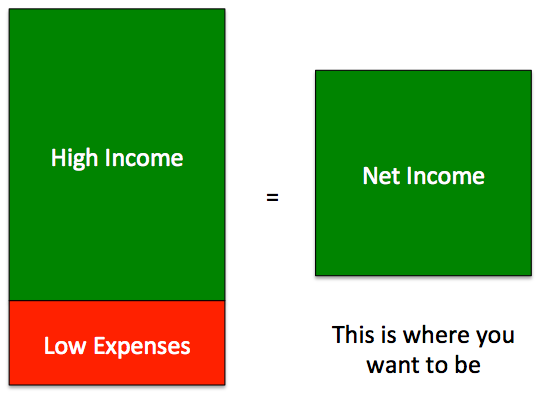
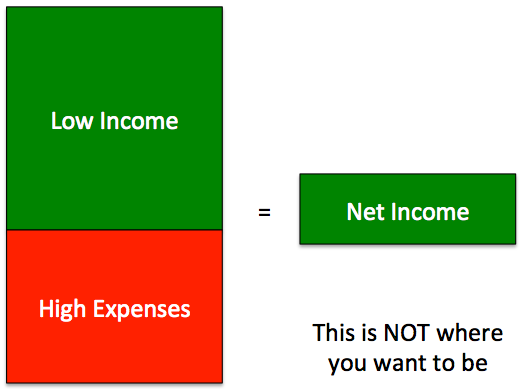
For 2016, the IRS allows for a 54 cent per mile deduction (down from 57.5 cents per mile in 2015) but that is NOT the cost of operating your vehicle. I see way too many drivers making this mistake time and time again. The IRS mileage rate is the deduction you will get, and it could actually offset a large portion of your income.
I really think every single driver should be using a service like QuickBooks to track income and expenses since it could save you a ton of money. As an example:
Let’s say you’re a full-time driver who puts about 1,000 miles (combination of on-trip miles and dead miles) a week on your car. If you earn $650 that week after Uber’s cut, you would be entitled to a $540 deduction ($0.54*1,000 miles).
If you met up with drivers and spent $110 for food (meals by yourself while on the job aren’t deductible, but meals with other drivers where you talk shop should be, make sure to confirm with a CPA) during the week, you’re now at $650 in total deductions.
That means that your income of $650 is reduced to $0 and you pay $0 in taxes.
But where drivers get confused is that you still need to account for the cost to own and operate your vehicle. We wrote an article about how to do that, but if you’re in a fuel efficient economical car, you’re probably around 20-30 cents/mile.
Once you have your total expenses, you subtract it from your net and that is the amount you ‘really made’ during that week. That’s the number you should be calculating and looking at to determine whether driving for Uber makes sense for you or not.
Will Rates Ever Go Back Up?
I think it’s a safe bet that rates won’t be headed back up any time soon. Uber says these cuts are temporary, but they’ve said that before and they weren’t. If you’re wondering why they won’t go up, Uber has actually made it pretty clear why.
Uber isn’t competing with taxis or Lyft at this point, they are competing with the cost of owning a car itself. Uber wants it to be cheaper for passengers to rely solely on Uber for all your transportation needs than it is to own a car. That’s the reason why Uber has lowered fares for 3 years in a row despite currently being 60-70% cheaper than a taxi (the LA taxi mileage rate for example is $2.70/mile and the current Uber mileage rate in LA is $0.90/mile)
What Are Drivers Doing About Fare Cuts?
Beyond angry e-mails, I’ve seen a lot of talk about driver committees forming in local cities. These groups of drivers are coordinating things like 1 hour log-outs and meetings in order to bring awareness to their plight.
As we’ve seen in the past, strikes have not been successful, but I do think a local grassroots approach can have an impact. When Uber forced Black car drivers to accept UberX requests in Dallas, drivers were outraged and after days of protests, they actually got Uber to change their position.
I think organizing on a local level is the way to go, and while it can start with the online driver community, it has to expand to in-person events too. Sadly, most drivers don’t read The Rideshare Guy and aren’t on online forums or Facebook groups. So limiting your outreach to online avenues won’t get enough traction since frankly there are just so many drivers out there. It has to be done in concession with in-person rallies in order to be successful.
There Are Other Options Out There
Drivers can help with these efforts in many ways, but it all depends on how motivated you are. Other than organizing, I think the first thing you need to do is at least sign up for Lyft, and if you have delivery options like Postmates and DoorDash, get onboard with those too. If you don’t, there may be other on-demand companies like Instacart, Washio, Caviar, Sprig, Amazon Flex, etc. These smaller companies tend to be in the bigger cities, but if you’re in a small city, there are options outside on-demand companies too.
RSG contributor Scott Van Maldegiam has been doing lots of deliveries for a company called Dynamex in Chicago, and he had such a good experience there, he ended up applying for a full time job in the back office and was hired! These opportunities are definitely tougher to find, but there are lots of companies out there doing things like last mile delivery for Amazon. It may take some Googling to find them, but they are there.
Ultimately, fare cuts will hurt drivers’ bottom lines and some will quit but many will keep on driving. Drivers have invested a lot into this gig and although they aren’t happy about fare cuts, quitting and finding something else isn’t always an option. But if you expect Uber to raise rates or come to your rescue, you need to wise up. There’s a lot to like about this job, but this probably won’t be the last set of rate cuts that we see.
Drivers, what do you think about Uber’s latest fare cuts? Now that a couple weeks have passed, have you decided to quit, keep on driving or look for something else?
For more reading on this topic, check out this post on Medium.
-Harry @ RSG




